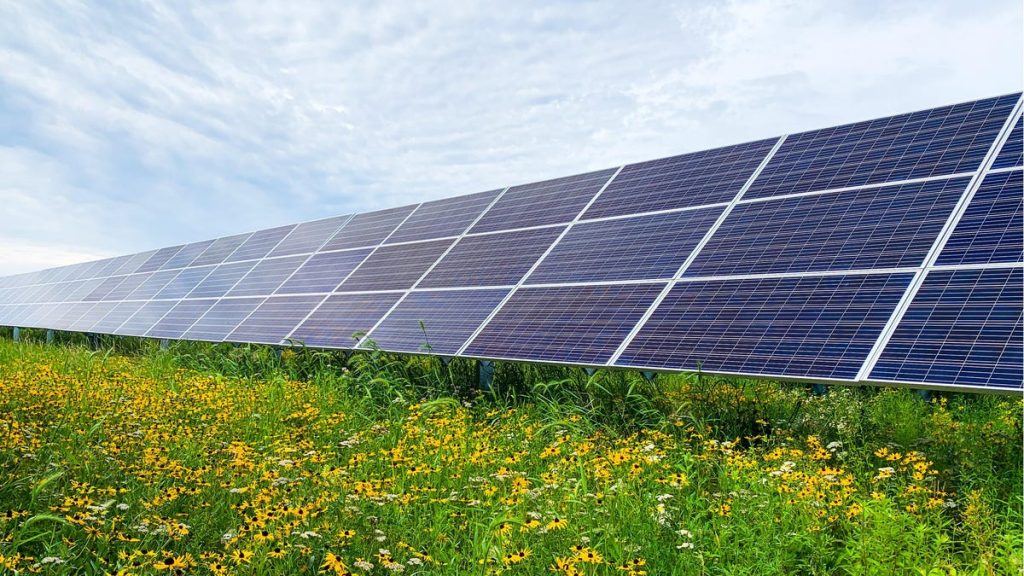Solar farms have the potential to support struggling pollinator populations, which are essential for plant life and food production. The decline in pollinators can be attributed to factors such as climate change, habitat loss, and pesticide use. Some estimates suggest that pollinator populations have declined by 45% over the last 40 years. However, recent research from the Argonne National Laboratory shows that designing solar farms with native plants can help reverse this decline. In Minnesota, two solar sites saw their pollinator populations triple in just four years, demonstrating the potential for positive change.
Insect pollinators are facing a multitude of challenges that are contributing to their decline. Climate change, pesticide use, habitat loss, and invasive species are all impacting pollinator populations. As a result, many species of bees and butterflies are at risk of extinction. This decline in pollinators could have far-reaching consequences, including a decline in crop production and economic losses. Research has shown that declining pollinator populations could contribute to more than 400,000 premature deaths each year, highlighting the importance of protecting these essential species.
The study conducted by the Argonne National Laboratory focused on two solar installations that were previously farmlands. By planting native plants alongside solar panels, the sites experienced an increase in both the number and variety of flowering plants and insects. Native bees, in particular, saw a significant increase, with twenty times more bees present at the sites after four years. This model of incorporating native plants into solar farms not only benefits pollinators but also makes the solar panels more productive by creating a cooler microclimate around them.
Large-scale solar installations on agricultural land have sparked controversy in some areas, with concerns about land use and local opposition hindering progress. However, the researchers found that solar farms surrounded by native plants could have positive spillover effects, including increased pollinator visits to adjacent farmland. By providing habitat for pollinators, solar farms can enhance pollination services for surrounding agricultural areas. This approach not only benefits biodiversity but also enhances the efficiency of solar panels by creating a cooler environment around them.
With the need to rapidly transition to carbon-free forms of energy to combat climate change, solar farms offer a promising solution that can also support pollinator populations. By consciously designing solar sites with native plants, developers can create habitats that benefit both the environment and the economy. The success of projects like those studied by the Argonne National Laboratory demonstrates the potential for solar farms to be more than just sources of clean energy – they can also be valuable ecosystems that support struggling pollinator populations. By incorporating these strategies into solar farm design, we can work towards a more sustainable future for both energy production and biodiversity.


